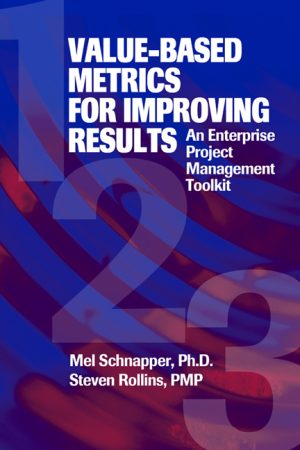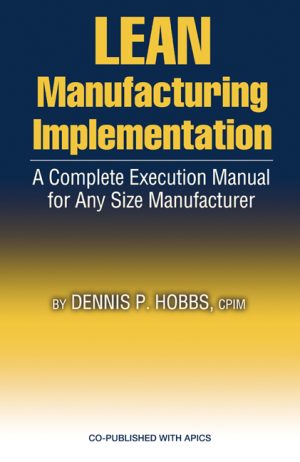Enterprise Project Portfolio Management
$59.95
Building Competencies for R&D and IT Investment Success
By Dr. Richard M. Bayney and Ram Chakravarti
Hardcover, 7×10, 384 pages
ISBN: 978-1-60427-060-0
August 2012
LEARN & EARN: Get 7.8 PDUs in the PMI skill areas of Technical or Strategic and Business Management Skills
Description
This unique guide and professional reference presents a structured framework for practitioners of project, program, and portfolio management to enhance their strategic and analytic capabilities in the evolving discipline of project portfolio management (PPM). It provides a practical, step-by-step approach to building competencies in categorizing, evaluating, optimizing, prioritizing, and managing an IT, pharmaceutical, biotech or other complex R&D-oriented portfolio of investments.
Key Features
- Contains a unique framework for building strategic and technical competencies in enterprise portfolio management, encompassing scenario analysis & strategic planning, project categorization, integrated evaluation, portfolio optimization, project prioritization and project and portfolio management
- Outlines best practices for successfully implementing and practicing PPM in R&D and IT enterprises, including decision framing and data integrity, resource management, stakeholder management, project/program/portfolio management office, organizational barriers to success, and a seminal section on risk analysis and risk management
- Supplies two comprehensive case studies that clearly demonstrate the application of quantitative and qualitative portfolio selection techniques in R&D and IT
- Illustrates robust techniques such as integer linear programming, goal programming and multiple objective decision analysis and how they can be used to prioritize and optimize the value of a portfolio subject to budgetary and human resource constraints
- Provides a multi-dimensional capability maturity model that will enable organizations to determine their maturity level across a broad spectrum of portfolio management competencies and how to utilize these techniques to guide optimal investment decisions across the enterprise
- WAV offers (i) assorted tables and figures from chapter 11, (ii) a slide presentation describing the utility of CREOPM™, a unique portfolio management process and methodology, (iii) an Excel analytical set-up template for the Innovations R Us Corporation case in Chapter 7 with instructions for portfolio optimization, and (iv) an Excel analytical set-up template for the Drugs R Us case in Appendix A, with instructions for decision analysis using TreePlan — available from the Web Added Value™ Download Resource Center
About the author(s)
Dr. Richard M. Bayney, PMP, President of Project & Portfolio Value Creation, is regarded internationally as a thought leader in the discipline of project portfolio management within the pharmaceutical and biotechnology industries. This 23-year veteran was formerly the Vice President, Portfolio Management & Decision Analysis at Johnson & Johnson Pharmaceutical Research & Development, and spent over 10 years building and leading departments in strategic planning, decision analysis, and portfolio management at Bayer, Bristol-Myers Squibb, and Johnson & Johnson. He earned an M.Sc. and Ph.D. from the University of London and an MBA from Columbia University. Richard is also a frequent speaker at industry events on decision-making under risk and uncertainty as well as risk, resource, and portfolio management, and is an adjunct faculty member at the School of Engineering and Applied Sciences and the School of Arts & Sciences at the University of Pennsylvania.
Ram Chakravarti is an expert in decision and risk analysis, portfolio management, enterprise architecture, IT strategy and large scale program execution in the IT sector. He has over 16 years of global IT, pharmaceutical & healthcare industry experience. Ram holds masters degrees from the Indian Institute of Science in electrical and electronics engineering and from the University of Pennsylvania in organizational dynamics specializing in decision analysis and portfolio management. He works for Oracle Americas, Inc. in their North American Enterprise Architecture practice.
Table of Contents
Section 1: Introduction to Enterprise Project Portfolio Management
Chapter 1: Basic Concepts of Enterprise Project Portfolio Management
Section 2: Prerequisites for Enterprise Project Portfolio Management
Chapter 2: Scenario Analysis and Strategic Planning
Chapter 3: Decision Framing and Data Integrity
Section 3: CREOPMTM—A Framework for Enterprise Project Portfolio Management
Chapter 4: Project Categorization
Chapter 5: Risk Analysis
Chapter 6: Integrated Evaluation
Chapter 7: Portfolio Optimization
Chapter 8: Project Prioritization
Chapter 9: Best Practices in Portfolio Management
Section 4: Case Studies in Enterprise Portfolio Management
Chapter 10: Case Study in IT Portfolio Management
Chapter 11: Case Study in R&D Portfolio Management
Chapter 12: Epilogue
Appendix A: A Primer in Decision Analysis
Appendix B: A Primer in Mathematical Programming
Appendix C: MODA Models for IT Investment Prioritization
Appendix D: SIRC’s Enterprise IT Portfolio
References
Index
Reviews
“Enterprise Project Portfolio Management balances the theoretical and pragmatic to deliver a practical synthesis for portfolio decision making. The authors provide the conceptual framework, tools, and real-world examples that can help align core technical, commercial, and financial planning functions under a common strategic management structure.”
—Robert F. Prachar, Jr., Sr. Vice President, Enterprise Strategy and Portfolio Planning, Endo Health Solutions
“Both students and practitioners will benefit from reading this comprehensive, easy-to-read, and highly practical book.”
—Dr. Jonathan Woo, Director, Portfolio Management & Decision Analysis, Johnson & Johnson
“…as on target as it is impressive. The authors have produced a very valuable resource. Their integration of the theory and practice of portfolio management will provide as much support for professors who must teach the topic as it will for students who must learn it and, just as important, practicing professionals who must apply it.”
—Dr. Donald L. Pardew, Professor, Columbia Business School (formerly), University of Bolzano (currently)
Related products
-

Financially Focused Project Management
Retail Price: $54.95$44.95 Add to cart -

Value-Based Metrics for Improving Results
Retail Price: $54.95$49.95 Add to cart -

Directing the Flow of Product
Retail Price: $59.95$49.95 Add to cart -

Managing Business Analysis Services
Retail Price: $54.95$44.95 Add to cart -

LEAN Manufacturing Implementation
Retail Price: $54.95$44.95 Add to cart

